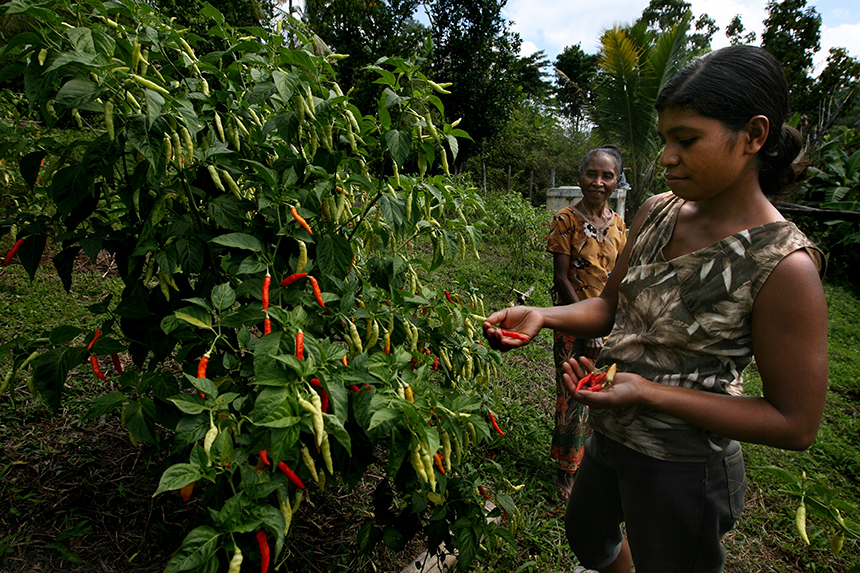
Timor-Leste is unique in the global community. It is a small, young, island country that endured centuries of colonization and then decades of further occupation and conflict until 1999. Now, it stands out in the world, because despite all its troubles it has managed to establish a stable, democratic government.
Yet because of its tumultuous history, Timor-Leste remains poor in technological resources. As it stands, only about 0.1% of the population has broadband access through computers – less than 10,000 people. This scarcity holds back progress in other areas ranging from agriculture to education. And resolving this technological gap is where the new United Nations Technology Bank can help.
Worldwide, in countries like Timor-Leste, roughly a billion people have been left behind by the information age. The 47 UN-designated Least-Developed Countries, or LDCs, are among the most severely affected. To help them build the technological foundation needed to prosper, the United Nations established the U.N. Technology Bank for Least-Developed Countries (UNTB).
Weak levels of technological development lead to a lack of digital connectivity throughout these countries, which has an impact in areas such as food production, health care, education and energy. The Technology Bank’s goal is to help LDCs harness newly available technologies so that these countries can produce scientific research and inspire innovation at home. To do this, the bank offers a way to access and build on the tools of the information age, said Joshua Setipa, the bank’s managing director.
![Joshua Setupa, left, speaks at the U.N. Technology Bank's assessment workshop in Timor-Leste. [Photo provided]](/sites/default/files/inline-images/web_setipa_on_panel.jpg) “Least-Developed Countries have fallen through the cracks,” Setipa explained. “And there’s real danger for them unless a deliberate effort is made to address their structural challenges to fully exploiting technology.”
“Least-Developed Countries have fallen through the cracks,” Setipa explained. “And there’s real danger for them unless a deliberate effort is made to address their structural challenges to fully exploiting technology.”
The bank’s work includes policy advice, connecting LDCs to experts in countries that have overcome similar struggles, promoting women in science, building science academies and providing training on digital resources for scientists. TWAS is currently participating in discussions with the bank about potential collaborative projects to help on many of these fronts.
“Some of these communities live in such challenging locations that it is not possible to be reached by a fibre-optic network,” said Setipa. “So what opportunities do we have yoday using technology to address that? We have made significant progress in wireless technology and satellite technology. Do they have to lay fibre-optic cable or can they leapfrog that to wireless solutions? These are the questions we investigate.”
The global endorsement of the 2030 Sustainable Development Agenda, with a commitment that nobody is going to be left behind, makes the work of organizations like the Technology Bank that much more critical. The Technology Bank began its work in December 2018, and is already holding policy workshops and building important connections. Current U.N. Secretary-General António Guterres visited the bank in person in October 2019 to affirm his support for the bank and its role.
“I am extremely proud to see the work that colleagues have done here,” Guterres said. “This Technology Bank was born 11 months ago and is already having a very important role in supporting Least-Developed Countries to have access to new technologies and to be able not to stay behind in the implementation of the Agenda 2030.”
A roadmap to technological development
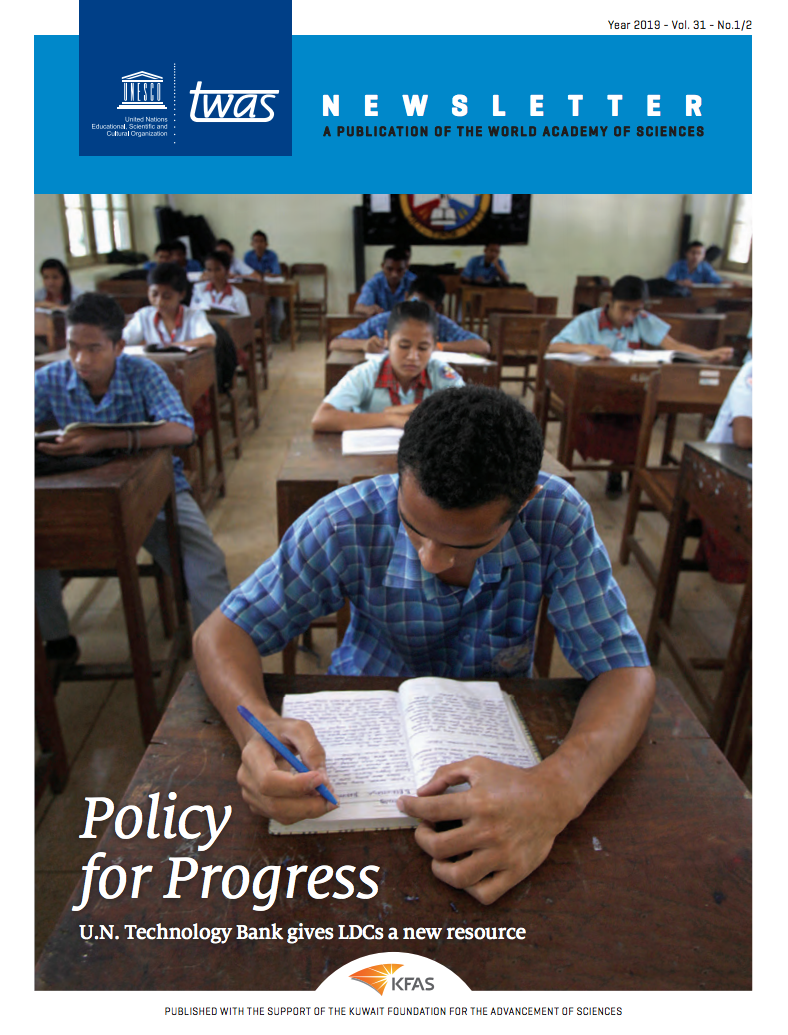 The bank was first conceived at the Fourth United Nations Conference on LDCs in 2011, which adopted a programme of action including a call for the establishment of the bank. The plan emerged from a study by an 11-member high-level panel of experts in 2015.
The bank was first conceived at the Fourth United Nations Conference on LDCs in 2011, which adopted a programme of action including a call for the establishment of the bank. The plan emerged from a study by an 11-member high-level panel of experts in 2015.
TWAS was deeply involved in the process, and the panel included five TWAS Fellows: Academy Executive Director Romain Murenzi, who chaired the panel; current TWAS President Mohamed H.A. Hassan; Firdausi Qadri of Bangladesh; Fang Xin of China; and Tebello Nyokong of South Africa. The panel’s recommendations were then presented to then-U.N. Secretary-General Ban Ki-moon, and the U.N. General Assembly adopted a resolution for the bank’s establishment directly under the Assembly in 2016.
Members of the bank’s current 13-member Governing Council were appointed by the secretary-general in 2017, with Hassan named the chairman. Also in 2017, the governments of Turkey and Norway agreed to provide its funding.
TWAS, a long-time supporter of scientific development in LDCs, will continue to play a strong role in the bank’s work. Hassan believes that it’s a key focal point for collaboration.
“I think that TWAS should focus even more on the Least-Developed Countries,” Hassan said. “I know that our priority at the moment is S&T-lagging countries, where all of the LDCs are included. But if we have a very specific programme on how to build capacities and how to generate, adapt and commericialise technologies to solve problems in collaboration with the U.N. Technology Bank, that might be a project worth pursuing.”
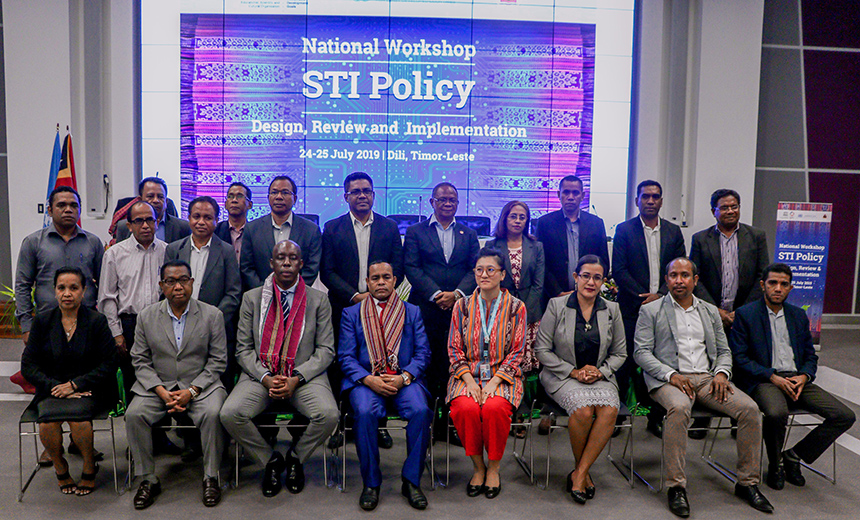 The bank carries out a process in LDCs called a technology needs assessment to identify prioritized gaps for capacity building and technology transfer, said UNTB Programme Management Officer Yesim Baykal. The first assessment was carried out in Timor-Leste. Assessments are also under way in Gambia, Bhutan, Sudan, Haiti and Uganda.
The bank carries out a process in LDCs called a technology needs assessment to identify prioritized gaps for capacity building and technology transfer, said UNTB Programme Management Officer Yesim Baykal. The first assessment was carried out in Timor-Leste. Assessments are also under way in Gambia, Bhutan, Sudan, Haiti and Uganda.
The bank began its assessment in TimorLeste in 2019 to guide a national workshop to help the country identify its technological needs in communication, computing, infrastructure and education. The workshop was attended by the nation’s ministries, universities, communities and businesses, as well as an expert consultant hired by the bank.
Once the report is finalized, the bank uses heir networks in developed countries from Japan to Switzerland to get expertise that will help the LDC make strides. “If there’s additional needs for funding, we’ll look into that,” Baykal said. “If they need training for the researchers in research methods, we will connect them to other institutions in our network.”
Unique Timorese challenges
Timor-Leste is a small Portuguese-speaking nation just north of Australia with a population of about 1.3 million. For centuries, it was a colony of Portugal until it was occupied by Indonesia in 1975 and, after a long conflict that according to Amnesty International cost over 200,000 lives, won independence in 1999. It established a democratic government soon after.
Today, the top priority for Timor-Leste is to bring the nation fully into the digital age, with strong Internet connections and up-to-date computers.
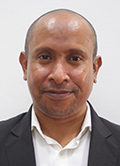 Roberto de Sousa, the executive director of Timor-Leste’s Information and Communication Technology (ICT) Agency and a participant in the workshop, said that high-speed Internet is an uncommon luxury in the country. Only about 0.1% of the population has broadband access – less than 10,000 people. Mobile Internet is more common, available to 30-40% of the population, but fixed broadband is key to reliably connecting the general public to needed services.
Roberto de Sousa, the executive director of Timor-Leste’s Information and Communication Technology (ICT) Agency and a participant in the workshop, said that high-speed Internet is an uncommon luxury in the country. Only about 0.1% of the population has broadband access – less than 10,000 people. Mobile Internet is more common, available to 30-40% of the population, but fixed broadband is key to reliably connecting the general public to needed services.
To resolve this problem, the government is considering buying submarine cable from Australia or Indonesia that will connect it to the world and likely cost approximately US$30 million. Officials hope the submarine cable project will be done by 2022 and available for service in 2023. They will then need to connect the entire country together using existing terrestrial fibre-optic cables and a Wi-Fi array to ensure that more remote, mountainous regions of the country have broadband access, too.
“We are the only country left in the region that is not connected to submarine cables,” de Sousa said. “We have more work that needs to be done, and our priority is by 2030, relying on fiber optic cables, to have enough high-speed connectivity to make a push for connected government, cloud computing, big data and smart cities.”
The Timorese government established the ICT agency in 2017 in an effort to help the nation catch up on all matters related to technology and communication – including electronic services for the public, a standardized government-wide system across departments, and cybersecurity rules. The top priority has to be ICT infrastructure, because so many other developments would follow from it.
An ideal pilot programme
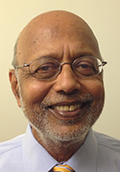 How does the Technology Bank work to solve this problem, among others? It hired Amitav Rath, an Indian-born policy consultant and president of Canada-based Policy Research International Inc. to attend the workshop and compose the report.
How does the Technology Bank work to solve this problem, among others? It hired Amitav Rath, an Indian-born policy consultant and president of Canada-based Policy Research International Inc. to attend the workshop and compose the report.
Rath said Timor-Leste is the ideal pilot test for the bank. The last time there was civil unrest of any serious nature was 14 years ago. Since then, the nation has seen impressive progress, and its young democratic government is facing tremendous challenges that technology would help provide solutions for.
Rath cited a simple but essential insight for the country: The technology Timor-Leste needs to grow and flourish already exists; the country just needs access to it. Just as the World Health Organization helped Timor-Leste achieve 100% vaccination against basic illnesses, the Technology Bank could serve a similar role for technological advancement.
How can Timor-Leste make use of existing technological solutions? “Implementing them means aligning with institutions, training and knowledge about what works in regions where political conflict won’t get in the way,” said Rath.
Rath said he’s recommending that Timorese eadership focus on policy coordination overall and especially as they improve their communications infrastructure and set up their first council for science and technology. It will be up to Timorese Prime Minister Taur Matan Ruak to keep his departments focused on the goal. Rath said he’ll strongly endorse plans through which the government quickly enacts its priorities, such as expanding the physical infrastructure that could provide broadband to villages. He suggests connecting Timorese officials with similar organizations with experience, in not only its regional neighbours but also smaller countries such as Iceland, since it is also a small island country with a population of a similar size.
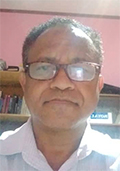 Another workshop participant, Jose Cornelio Guterres, is the executive president of Timor-Leste’s National Institute of Science and Technology, a new organization connecting scientists from the nation’s six academic institutes. It aims to train young Timorese scientists on research methods and other useful skills such as scientific writing.
Another workshop participant, Jose Cornelio Guterres, is the executive president of Timor-Leste’s National Institute of Science and Technology, a new organization connecting scientists from the nation’s six academic institutes. It aims to train young Timorese scientists on research methods and other useful skills such as scientific writing.
He also said a major priority for the institute is data sovereignty – ensuring that data created and stored in the country is governed by that country’s laws, and available to that country’s researchers. The institute wants to create a digital repository to preserve data researched by visiting scientists as property of the country. This way, Timorese researchers and policymakers will be able to take advantage of that data.
“Our political leaders have successfully struggled to fully obtain our territorial sovereignty from our neighbouring countries, but we still fail to struggle for sovereignty of data,” Jose Cornelio Guterres said. “Most foreign researchers, they took away data from our country to their country without leaving any data with us.”
Greater access, more academies
![A weaver works on a new design at the Tais market in Dili. Dili is located on the northern coast of Timor-Leste. [Photo: Asian Development Bank/Flickr]](/sites/default/files/inline-images/web_colorful_weave_inside.jpg) Technology needs assessments are not the only work the UNTB is doing, said Simmone Rose, another programme management officer with the bank.
Technology needs assessments are not the only work the UNTB is doing, said Simmone Rose, another programme management officer with the bank.
There is also an initiative to strengthen national academies of science – which provide a useful advisory resource to governments and communicate important scientific information to the public – in LDCs in Africa and Asia.
They have helped organize four regional consultations in Africa – in the north, south, east and west – bringing together representatives of academies, universities and governments.
“We are looking at strengthening the capacity of academies to engage in national discourse, but also looking at countries which do not yet have academies of science and working to establish academies,” Rose said. “Or to establish appropriate mechanisms to ensure the scientific community is organized, because in some cases academies have been tried and failed and aren’t the best mechanism for those countries.”
The Technology Bank also raises awareness of a U.N. programme called Research4Life. Through it, over 2,600 researchers have been trained to access useful scientific journals.
“What they have done is negotiate free access to scientific journals for LDCs,” Rose said. “But in many cases these LDCs are unaware of this or don’t make use of these materials.”
The bank, in its discussions with organisations such as the African Union, is also committed to supporting women in science to fully realise human potential in LDCs. The bank is also participating in discussions to begin a capacity-building programme in LDCs focused on remote-sensing technology – training people to analyze satellite images. There are also plans to establish four “technology innovation laboratories”, where local innovators can go to develop their ideas, including one in Lesotho. All these programmes can make important contributions that will address the systemic issues holding back LDCs, said Setipa.
“The world has adopted the 2030 Sustainable Development Agenda, with a commitment that nobody is going to be left behind,” Setipa said. “But the reality is not going to be achieved as long as there is not a deliberate effort to leapfrog the digital divide.”
Sean Treacy

